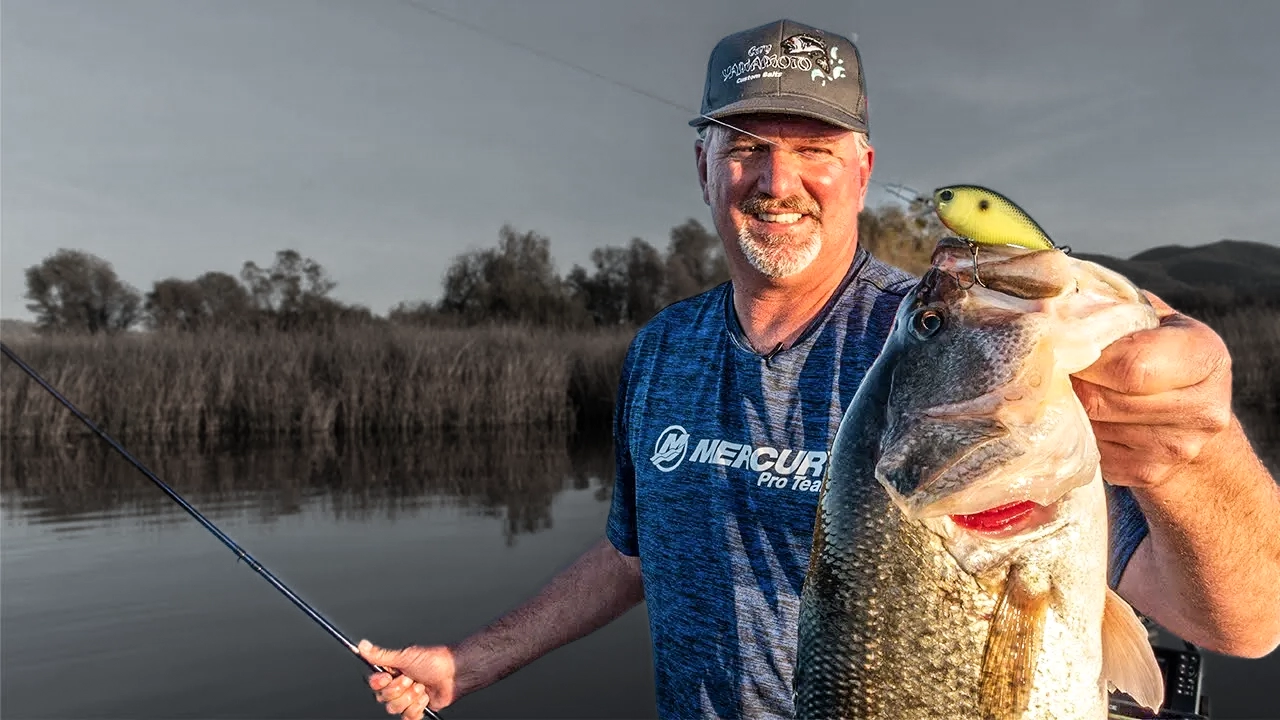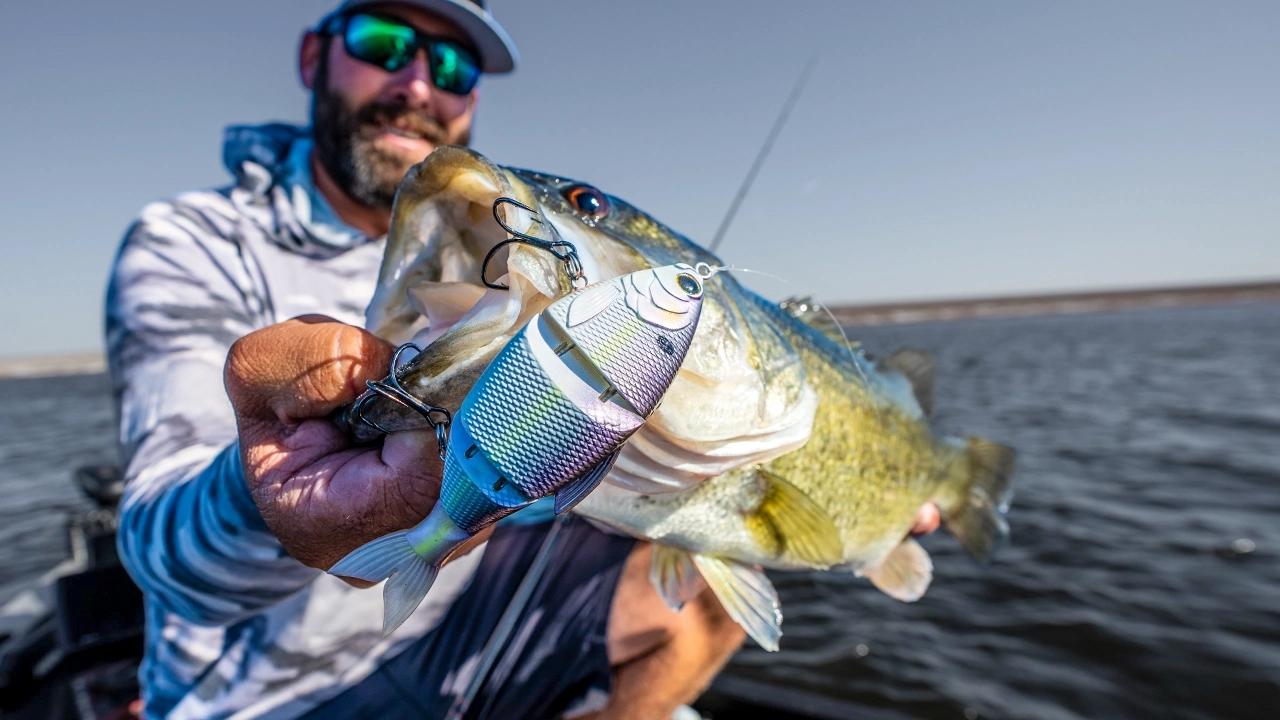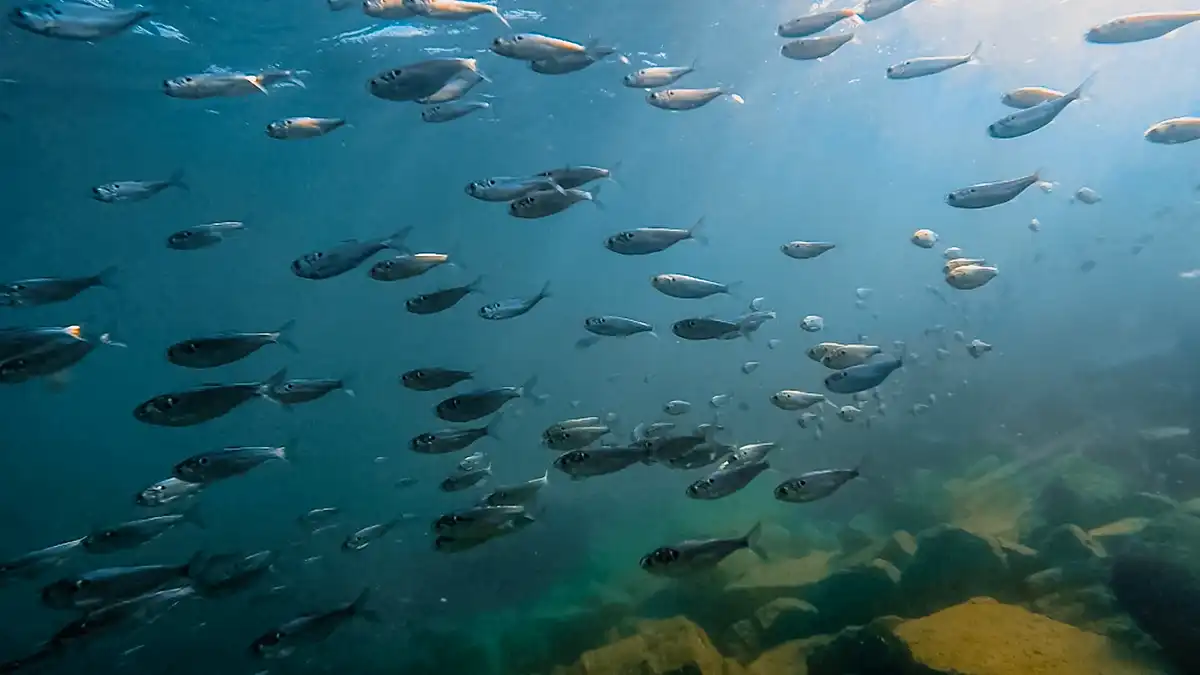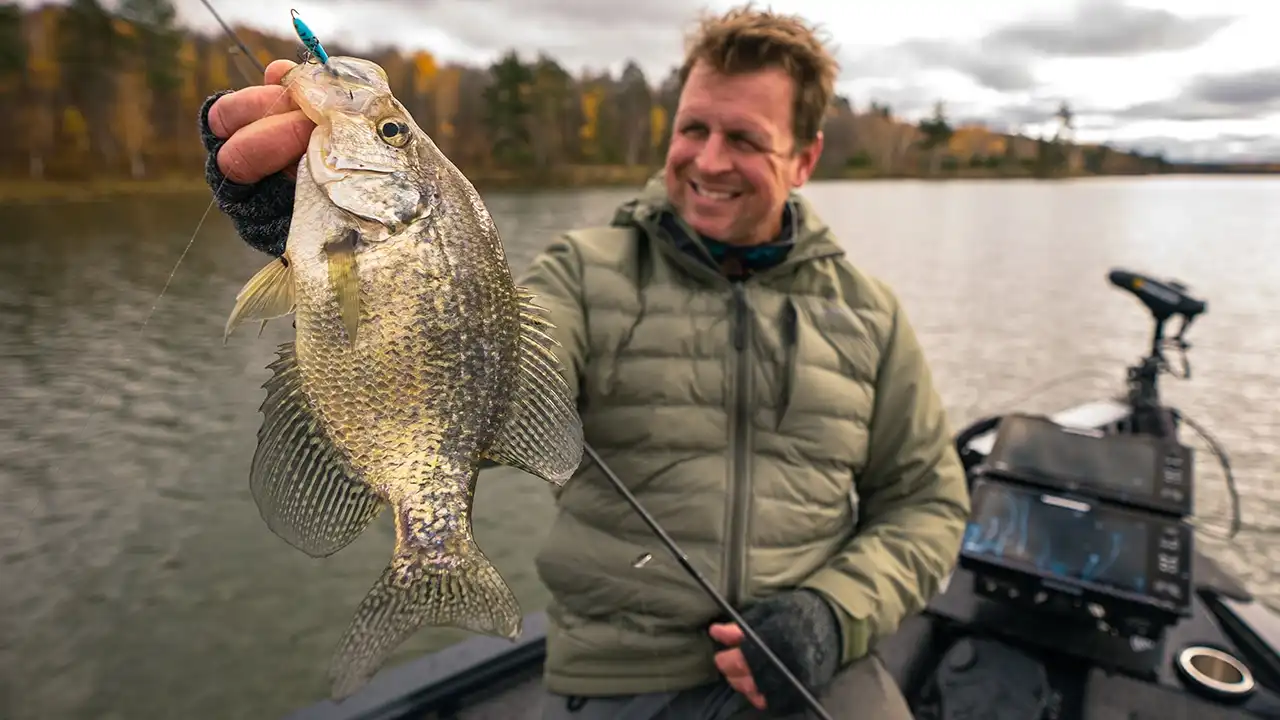Wes Logan knows well the potential for fall to throw the proverbial curve ball; but the Alabama pro doesn’t flip out — at least not in the metaphorical sense. Actually, flipping is precisely how Logan deals with fall’s fickle tendencies.
We typically expect to find bass moving progressively farther into creeks, pockets, etc. in search of shad. It’s usually an all-out gorge fest, but it’s not always a linear deal.
As soon as we pass the fall equinox, diminishing photo period puts the giddy-up on predators whose instinct tells them to start feeding. However, the day-to-day specifics yield to weather patterns.
“If you have a really bright, sunny day with not a lot of wind and it seems like there’s not a lot of activity, that’s when I start looking for the flipping bite,” Logan said. “If you have an area where you see a lot of bait, but you don’t see a lot of activity, there’s probably fish around in the fall timeframe.”
The targets
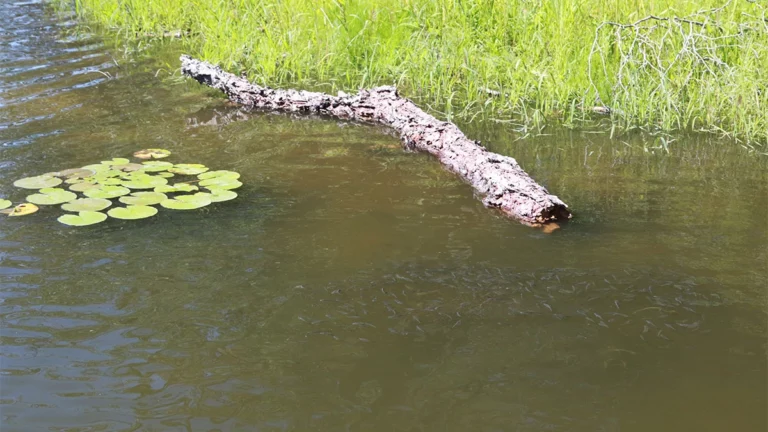
The very nature of the fall migration areas means finding targets to flip is usually pretty easy. The key, Logan said, is isolated cover — something that’s likely to attract a big fish that’ll claim a key spot and attack anything that drops in for a visit.
Isolated grass clumps, those dwindling sentinels guarding a mat’s ragged edge top Logan’s list, as they’re often the right along the bait’s travel lane. Spotting clusters of shad hanging on these vegetation clumps paints a big red X, but a good spot’s a good spot, so Logan will give each one a flip.
“Those little isolated pieces of grass may even be canopied out where they provide shade for those fish when it’s bright and sunny,” Logan said of the optimal scenario. “If you don’t have any grass in the area you’re fishing, it would be hard cover like docks, rocks, logs, and stumps.”
Now, traditionally, flipping cover tends to excel during the day’s brightest hours, as intense sunlight predictably positions fish. This rule still holds for fall flipping, but Logan will also hit the water expecting early flurries.
“From my experience, I’ve seen that the flipping bite can be really good first thing in the morning and then, a lot of times, you’ll hit a lull for a couple hours,” Logan said. “Around the lunchtime period, it will pick back up and last two or three hours. You’ll get another lull and then in the evening, you’ll get another feed.”
As Logan explained, unfavorable weather doesn’t diminish the fish’s seasonal feeding motivation; it simply parks them on sheltering cover. When they decide to feed, they’ll gobble anything that passes.
“I really think those lulls occur because they get full,” Logan said. “They eat so much in the fall because they know the winter’s coming. Even in the south, (the fall months) are the last opportunity for them to feed and they know that.”
Logan also points out that during more stable weather, when you’re more likely to see that traditional schooling activity, the fish will take occasional breathers. These time-out periods offer great flipping opportunities.
“When they decide to become more docile and not chase bait 30 yards around a cove, that’s when they’ll set up on something to kinda rest,” Logan said. “They’ll still eat; a fish is an opportunistic predator, so if he’s sitting on this log and a shad swims by, he’s gonna run out there and eat it.
“But when he doesn’t want to be active, he’ll set up on something. That’s when the flipping bites becomes better.”
In Logan’s view, there may be better times and better ways to catch more fish in the fall, but making the most of the tougher days and maximizing all periods of a stable day requires options. Even if the fish are doing the fall feeding dance, don’t miss the bonus opportunities.
“Basically, anytime in the fall, I’m gonna have a flipping setup rigged up just for that instance where they may be schooling, they may be blowing up and the next 30 minutes you don’t see anything going on,” Logan said. “That’s when I pick up the flipping stick and I may pick up an extra fish or two.
“You’re not going to catch 100, like you would if you get on a good schooling bite, but any extra fish you can catch throughout the day can be huge.”
The package

When he’s flipping vegetation, Logan arms himself with a 7-10 heavy Ark flipping stick with 6-pound Sunline FX2 braid on a Lew’s Pro Ti reel. Because this can turn into an actually punching situation, he’ll use a 3/4- to 1 1/2-ounce weight and a flipping hook.
“If I’m using the regular size Zoom Z Craw, I’ll use a 4/0 hook; if I’m using the Z Craw Jr. with a punch skirt, I’ll use a 3/0,” Logan said. “The Z Craw is my go-to bait for vegetation and I’ll mix up the size and color based on what the fish are telling me.”
For wood, docks and other hard targets, Logan backs off to a 7-6 heavy Ark flipping stick and a Lew’s reel holding 20- to 25-pound Sunline Shooter fluorocarbon. He’ll use the same baits, but drop his weight size to 3/8- to 1/2-ounce.
“A 3/8 is a good all-around size, but I’ll use a 5/16 if I get into really shallow water,” Logan said.
Standby tools
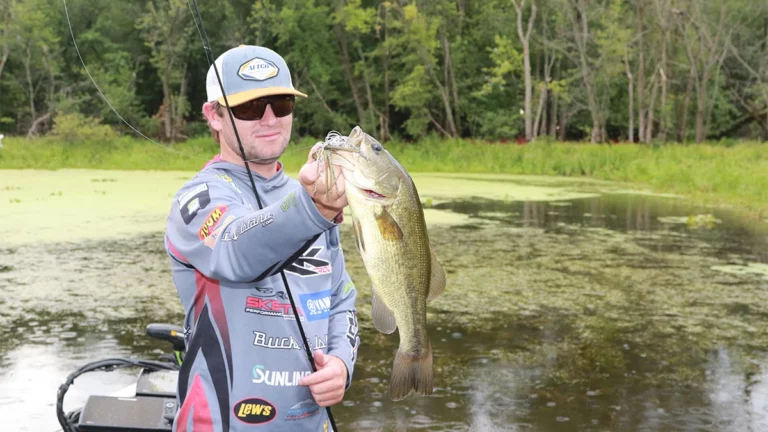
While flipping those isolated targets sits comfortably within Logan’s wheelhouse, he certainly does not ignore that more mobile scenario of picking off the bass that are stalking shad schools. Good thing is these are not divergent tactics; often it’s simply a matter of working through a creek, pocket or backwater and fishing what opportunities arise.
For example, the tattered edges of the grass beds that will progressively diminish with fall’s unfolding often see pods of baitfish sneaking their way through the cover. Sporadic blow-ups, swirls and bait showers often press the “frog” or “topwater” button in our mental menus, but Logan’s keen to reach for a swim jig.
His go-to is a 5/16-ounce swim jig with either a Zoom Super Speed Craw or a Zoom Z Swim. Different looks are good, but there’s also a tactical thought here.
“The bigger the trailer, I can make it float up; if I want it to sink a little bit, I can slow the retrieve and put a smaller trailer on the jig,” Logan said. “If I go to a 3/8- or a 1/2-ounce jig, I’ll have to work the bait harder to get it to do what I want. The 5/16 just keeps me from getting (fatigued).”
Logan said he’ll keep a lighter model swim jig with a thinner diameter hook on standby. If fish consistently nip at the bigger profile bait, downsizing may close the deal.
Either way, Logan knows this setup will allow him to cover water quickly and tempt the fish that are clearly in a chasing mood. These moments may come and go, but most fall days — with the exception of hard post-frontal conditions — will offer windows of reaction bait opportunity.
If they don’t, no worries. Logan’s not gonna flip out — or maybe he will. Depends on how you look at it.







